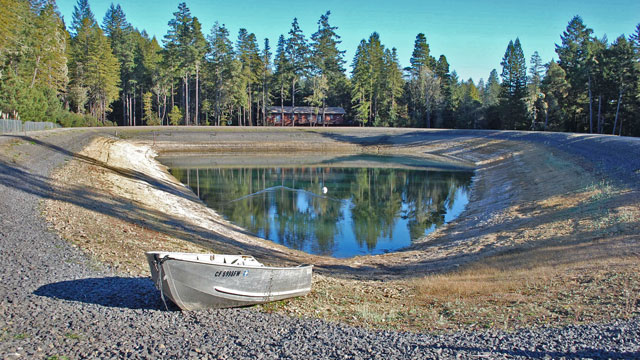“We’ve hit the wall in California,” says Gleick. “We’ve hit ‘peak water.’ Even in a normal year or a wet year, we’re overextended.”
The majority of the water savings could come from the agricultural sector, which accounts for 80 percent of water used by people in California. Switching more agricultural acres to drip irrigation and using precision scheduling to time irrigation could save 17 to 22 percent – or 5.6 to 6.6 million acre-feet of water annually.
“We’ve got a million acres of land that’s under flood irrigation that could go to drip,” says Bob Wilkinson, adjunct associate professor of Environmental Science & Management at University of California Santa Barbara.
Other strategies include:
- Urban area water efficiency – shifting to drought-tolerant landscaping, accelerating the adoption of water-efficient appliances and fixing leaks in the urban water system.
- Water reuse – using recycled water to irrigate landscaping and crops, installing graywater systems (to catch water that goes down the drain) in homes and businesses, and using recycled water to recharge groundwater basins.
- Stormwater capture – catching runoff with rainwater barrels and cisterns at homes and businesses, as well as directing runoff to recharge groundwater.
The report did not examine the cost of the technologies, but Gleick says they’ve been shown to be cost-effective, particularly in comparison to desalination or building new dams.
Store More Water
The report hit the streets on the same day as another list of suggestions for long-term water fixes from the state’s local and regional water agencies. While there is common ground between the two reports (both advocate strongly for using more reclaimed water), the manifesto from the Association of California Water Agencies takes a markedly different approach; three of the 10 key recommendations from ACWA involve expanding the state’s infrastructure for storing and moving water.
Asked if ACWA accepts the premise that there are millions of acre-feet that could be tapped without pouring more concrete, ACWA executive director Tim Quinn replied, “The bottom line is, we don’t.”
“It’s not any more true today than it has been in the past that recycling and conservation will save us all by themselves,” Quinn said. “That’s the premise of the NRDC report and…we just don’t buy it.” Nonetheless, Quinn says that water agencies are already pursuing many conservation and recycling strategies.
The ACWA report recommends immediate funding for “shovel-ready” projects like building interconnections between water systems. It also recommends increasing water storage through groundwater and surface water projects, like completing Sites Reservoir or modernizing existing dams.
The report also recommends some water conservation strategies, like building water recycling projects, desalination plants and increasing conservation efforts by water agencies.
Funding for any of these strategies will be largely tied up in the 2014 Water Bond, still slated for the November ballot. State legislators have been debating how the bond should be revised.
Science Editor Craig Miller contributed to this post.
